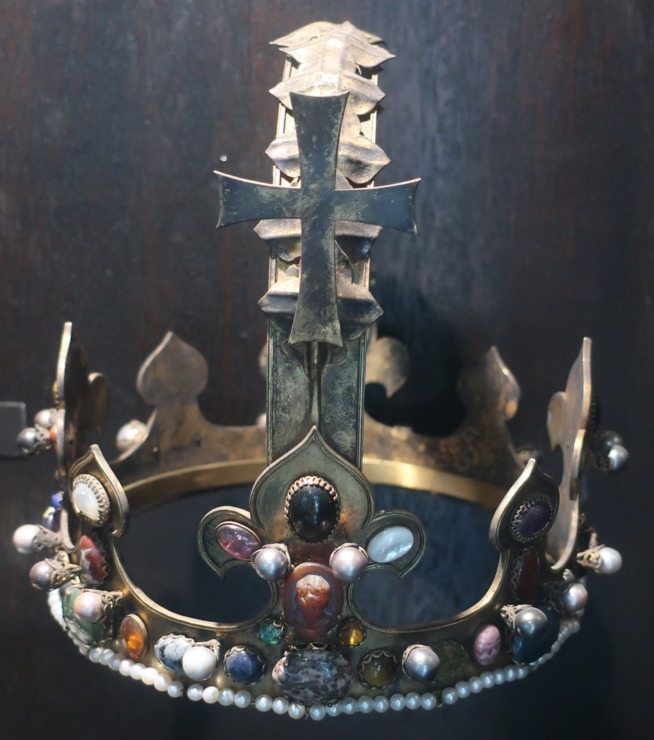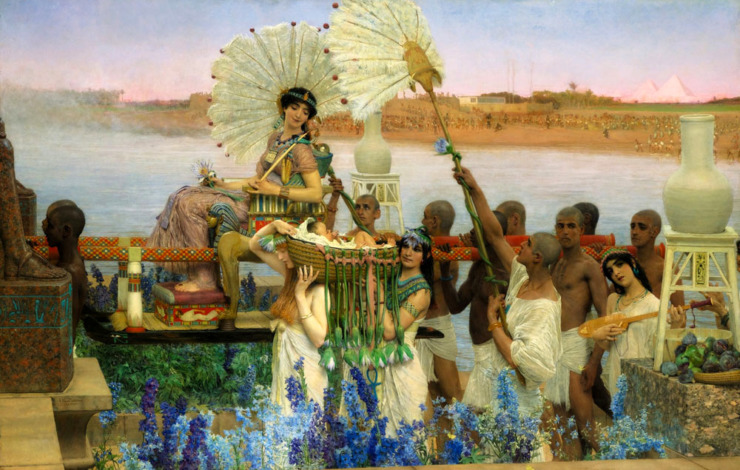Modern Love
And what is love? It is a doll dress’d up
For idleness to cosset, nurse, and dandle;
A thing of soft misnomers, so divine
That silly youth doth think to make itself
Divine by loving, and so goes on
Yawning and doting a whole summer long,
Till Miss’s comb is made a pearl tiara,
And common Wellingtons turn Romeo boots;
Then Cleopatra lives at number seven,
And Antony resides in Brunswick Square.
Fools! if some passions high have warm’d the world,
If Queens and Soldiers have play’d deep for hearts,
It is no reason why such agonies
Should be more common than the growth of weeds.
Fools! make me whole again that weighty pearl
The Queen of Egypt melted, and I’ll say
That ye may love in spite of beaver hats.
-John Keats
Enjoy Artistic Representations of “Modern Love” by John Keats

Imperial crown of Charlemagne

Painting by Lawrence Alma-Tadema, 1904.
Listen to Readings of “Modern Love”
Listen to this Musical Interpretation of “Modern Love” by John Keats
John Keats Biography
Keats was born in London on Oct. 31, 1795; a few weeks later he was baptized at St. Botolph Without Bishopsgate Church, near where his parents lived and father worked as the manager of a stable owned by his father-in-law. Keats was the eldest of four children, with George, Tom, and Fanny following him. The family was well off enough that the boys were sent to Clark’s Academy in Edmonton at what is now the north London borough of Enfield for their education; it was riding his horse home from a visit to the school that Keats’ father fell and died the next day. His mother remarried (rather quickly, in fact), fought with the rest of the family, and died fairly young from consumption or tuberculosis, which was all too common at the time and would eventually claim the life of Keats’ youngest brother, Tom, as well as Keats himself.
He was apprenticed to a local doctor, but the relationship didn’t seem to work too well. He ended up working at St. Guy’s Hospital in the Southwark district of London, continuing his medical training and writing poetry (the site of the original St. Guy’s in now occupied by London’s tallest office building, known locally as “The Shard”).
While Keats had numerous city connections (Anita Miller also has a “Keats in the City” walk), it is with Hampstead that he is most closely associated. Fellow poets lived there, as did the editor who first published his poetry. Artists whom Keats associated with lived there. Keats himself would move there with his brothers. Keats and his friends would wander Hampstead Heath, talking and arguing poetry and the issues of the day. After moving into Wentworth House in Hampstead, Keats wrote five of six famous odes, including “Ode to a Nightingale.” And it would be at Wentworth House in Hampstead that Keats would realize that he was dying from the same disease that took his mother and younger brother.
Enjoyed Modern Love by John Keats and want to know more about Keats’ life? Try A Month With Keats: A Walk Into His Life
That’s it for Modern Love!
BUY ‘HOW TO WRITE A FORM POEM’ NOW!
